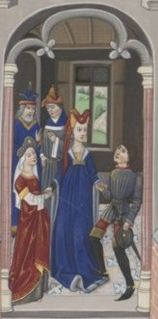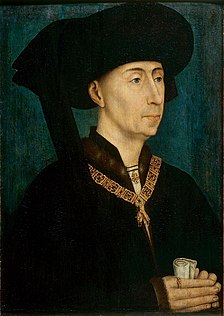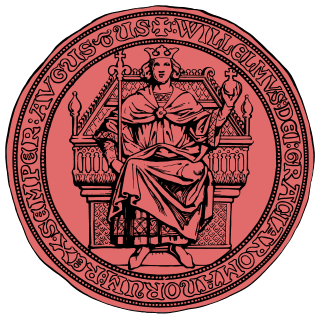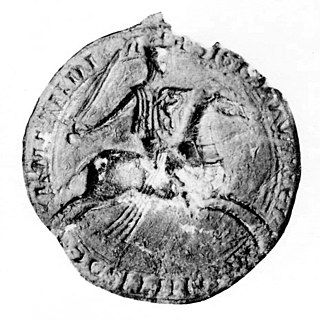 W
WThe counts of Holland ruled over the County of Holland in the Low Countries between the 10th and the 16th century.
 W
WDuke Albert II or Albrecht was a feudal co-regent, with his father Albert I, Duke of Bavaria, in the counties of Holland, Hainaut, and Zeeland in the Low Countries. Additionally, from 1389 until his death in 1397, he administered the Bavarian province of Straubing in the name of his father, it being his Bavarian ducal line's appanage and seat. Albert II's mother was Margaret of Brieg, great granddaughter of Wenceslaus II of Bohemia.
 W
WAlbert I, Duke of Bavaria KG, was a feudal ruler of the counties of Holland, Hainaut, and Zeeland in the Low Countries. Additionally, he held a portion of the Bavarian province of Straubing, his Bavarian ducal line's appanage and seat.
 W
WThe lords of Van Brederode were a noble family from Holland who played an important role during the Middle Ages. The earliest documented members appear in the 13th century in the region of Santpoort, at Castle Brederode.
 W
WCharles, nicknamed the Bold, was the Duke of Burgundy from 1467 to 1477.
 W
WDirk V was Count of Holland from 1061 to 1091.
 W
WFloris IV was the count of Holland from 1222 to 1234. He was born in The Hague, a son of William I of Holland and his first wife, Adelaide of Guelders.
 W
WFloris V reigned as Count of Holland and Zeeland from 1256 until 1296. His life was documented in detail in the Rijmkroniek by Melis Stoke, his chronicler. He is credited with a mostly peaceful reign, modernizing administration, policies beneficial to trade, generally acting in the interests of his peasants at the expense of nobility, and reclaiming land from the sea. His dramatic murder, engineered by King Edward I of England and Guy, Count of Flanders, made him a hero in Holland.
 W
WJohn I was Count of Holland and son of Count Floris V. John inherited the county in 1296 after the murder of his father.
 W
WJohn III the Pitiless, Duke of Bavaria-Straubing (1374–1425), of the House of Wittelsbach, was first bishop of Liège 1389–1418 and then duke of Bavaria-Straubing and count of Holland and Hainaut 1418–1425.
 W
WLouis II was count of Loon between the end of the 12th century to 1218. He was the son of Gerard, Count of Looz, and Adelaide of Gelderland, daughter of Henry I, Count of Guelders, and Agnes of Arnstein, daughter of Louis III of Arnstein. He also claimed to be the legitimate Count of Holland during the Loon War (1203–1206).
 W
WLouis IV, called the Bavarian, of the house of Wittelsbach, was King of the Romans from 1314, King of Italy from 1327, and Holy Roman Emperor from 1328.
 W
WMargaret II of Avesnes was Countess of Hainaut and Countess of Holland from 1345 to 1356. She was Holy Roman Empress and Queen of Germany by marriage to Emperor Louis IV the Bavarian.
 W
WPhilip the Good was Duke of Burgundy from 1419 until his death. He was a member of a cadet line of the Valois dynasty, to which all the 15th-century kings of France belonged. During his reign, the Burgundian State reached the apex of its prosperity and prestige and became a leading center of the arts. Philip is known in history for his administrative reforms, his patronage of Flemish artists such as Jan van Eyck and Franco-Flemish composers such as Gilles Binchois, and the capture of Joan of Arc. In political affairs, he alternated between alliances with the English and the French in an attempt to improve his dynasty's position. As ruler of Flanders, Brabant, Limburg, Artois, Hainaut, Holland, Luxembourg, Zeeland, Friesland and Namur, he played an important role in the history of the Low Countries.
 W
WThe Ridderzaal is the main building of the 13th-century inner square of the former castle of the counts of Holland called Binnenhof at the address Binnenhof 11 in The Hague, Netherlands. It is used for the state opening of Parliament on Prinsjesdag, when the Dutch monarch drives to Parliament in the Golden Coach and delivers the speech from the throne. It is also used for official royal receptions, and interparliamentary conferences.
 W
WVan Wassenaer is the name of an old Dutch noble family. It was first mentioned in the county of Holland on November 3, 1200. They are one of the few original noble families from Holland that has survived to this day. Members of the family carry the title of count or baron.
 W
WWilliam II was the count of Holland and Zeeland from 1234 until his death. He was elected anti-king of Germany in 1248 and ruled as sole king from 1254 onwards.
 W
WWilliam I was the count of Holland from 1203 to 1222. He was the younger son of Floris III and Ada of Huntingdon.
 W
WWilliam I, Duke of Bavaria-Straubing, was the second son of Emperor Louis IV and Margaret II of Hainaut. He was also known as William V, Count of Holland, as William III, Count of Hainaut and as William IV, Count of Zeeland.
 W
WWilliam II was Count of Hainaut from 1337 until his death. He was also Count of Holland and Count of Zeeland. He succeeded his father, William I, and married Joanna of Brabant in 1334, but had no issue.
 W
WDuke William II of Bavaria-Straubing KG was also count William VI of Holland, count William IV of Hainaut and count William V of Zeeland. He ruled from 1404 until 1417, when he died from an infection caused by a dog bite. William was a son of Albert I and Margaret of Brieg.